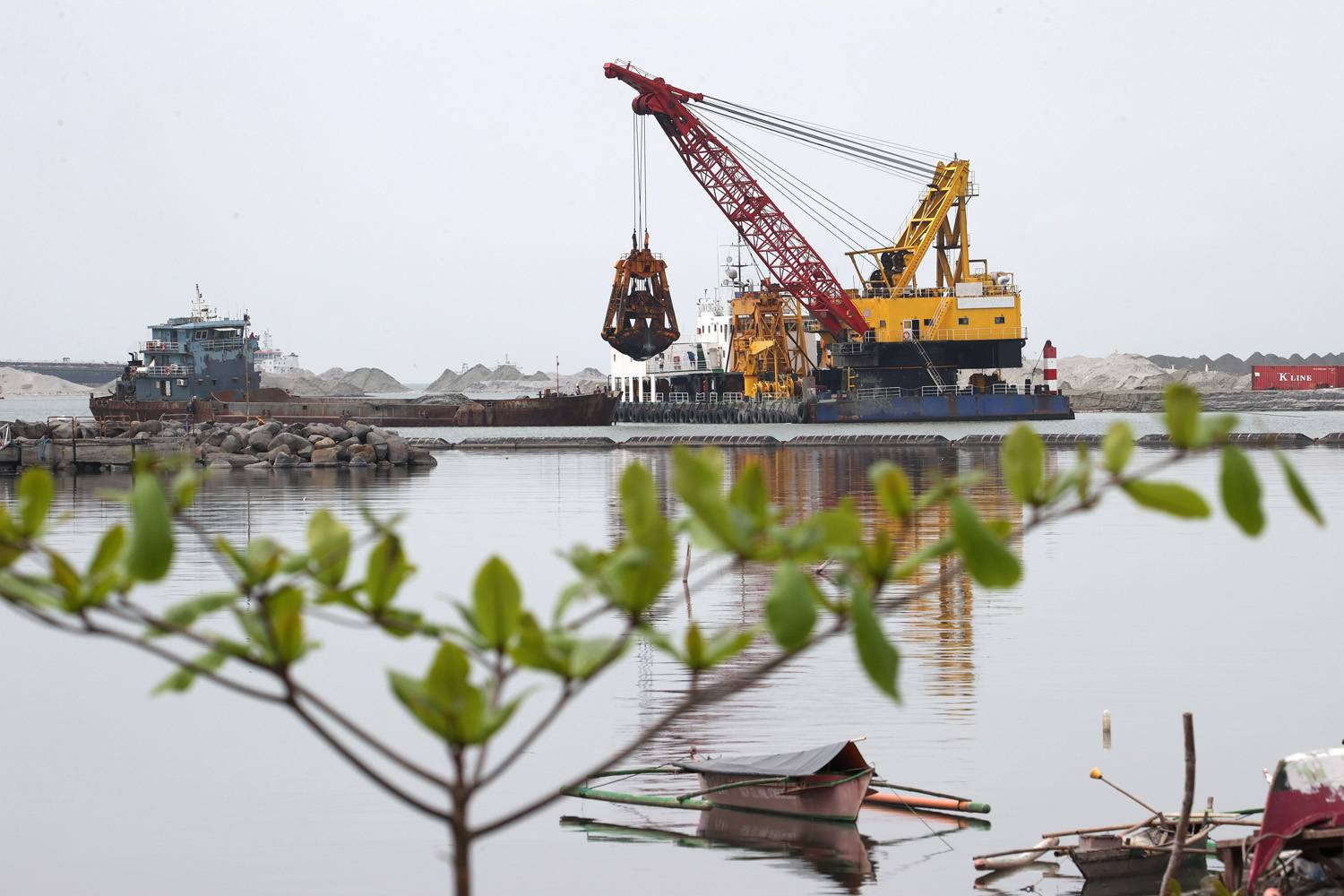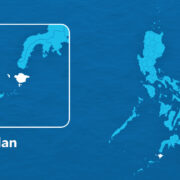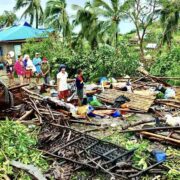21 Manila Bay reclamation projects equal area of 2 cities

Manila Bay is “alive and vibrant” with functioning ecosystems to support marine life and the livelihood of fisherfolk, but it is under threat from 21 projects to reclaim land nearly as big as two Metro Manila cities, which could cause massive flooding, water contamination and loss of fishing grounds, according to key findings of a scientific study released on Wednesday.
The “most fundamental impact” of the proposed and approved reclamation projects is the change in the natural flow of water currents in the bay, causing contaminants to “likely stay within reclamation sites,” said Charina Repollo, one of the 48 scientists and experts from the Marine Environment and Resources Foundation, Inc. (MERF).
The expert group was tapped by the Department of Environment and Natural Resources (DENR) in 2023 to determine how project proponents, stakeholders, local governments and concerned state agencies should respond to “alleviate the pressure of rapid urbanization” from further reclamations in Manila Bay.
Manila, Marikina put together
“Reclamation activities significantly disrupt the natural circulation of water in Manila Bay,” said Repollo, a physical oceanographer.
“The construction of large coastal structures and alteration to the coastline weakens water exchange, resulting in stagnation and the buildup of sediments, pollutants, and debris in specific areas,” she said.
Around 6,100 hectares of new land, almost the same size as Manila and Marikina put together, would rise from the bay from the reclamation projects—two ongoing, 12 approved, and seven being proposed.
When pollutants accumulate for a long period of at least three weeks, water quality deteriorates, posing a “serious and lasting threat to the health of Manila Bay’s ecosystem and nearby communities,” Repollo said.
The water quality surveys done by the scientists detected pathogenic bacteria, such as Enterobacteriaceae and Stenotrophomonas, and 11 kinds of metals, including highly toxic cadmium and lead, Repollo said.
Sediment buildup
Risks from exposure to pathogens and toxic substances heighten during extreme weather, she noted, citing the “extremely high” sediment build-up and total suspended matter (TSM), or undissolved particles, which are pollutants, during Supertyphoon “Carina” (international name: Gaemi) in July 2024.
“This prolonged turbidity is a clear sign that reclamation activities are increasing sediment vulnerability during extreme weather events,” said Repollo, who is also the deputy director for research at the University of the Philippines Marine Science Institute.
She assured the public, however, that despite the deteriorating water quality of Manila Bay, it is still “alive” and remains a “productive and vital fishing ground that is worth protecting” as it even surpasses the catch rates of other major fishing sites.
From April to October 2024, Manila Bay fisherfolk caught an average of 2 kilograms to 4 kg of fish per hour, a much better yield than the average of 1 kg to 2 kg per hour in other fishing grounds in Masinloc, Siargao, Lingayen, Ragay and San Miguel Bay.
The fishing gear used for comparison were gillnet, hook and line, liftnet, scoopnet, spear, traps and trawl. The key species commonly caught in Manila Bay were bisugo, hasa-hasa, alimasag and sardines.
The coral cover of the bay, which showed a “high species diversity“ in the coastal waters of Corregidor Island, Maragondon and Ternate in Cavite province and Mariveles in Bataan, showed “strong potential for recovery, especially if appropriate management and conservation measures are put in place,” said Repollo.
Mangrove loss
“However, reclamation is reducing fishing grounds and destroying habitat, especially critical ones like the mangrove,” she said, adding that this threatens the livelihood of coastal communities that rely on daily fish catch for income and sustenance.
“Mangrove loss will also weaken the natural coastal defenses that they provide, reducing protection against typhoons, storm surges and coastal erosion,” Repollo said.
Existing conditions of Manila Bay waters, specifically its “high sedimentation, low dissolved oxygen and elevated nutrient concentrations, create a favorable environment for red tide,” Repollo said.
She expressed alarm over possible food poisoning among people consuming contaminated shellfish from the bay, where species causing harmful algal blooms, commonly known as red tide, had been detected.
She said it was critical to conduct regular monitoring of water quality and shellfish safety.
Major urban areas and business districts are also at risk of inland and coastal flooding, because the reclamation activities changes the coastline, resulting in a “bottleneck effect,” or blockage of the natural floodwater drainage.
According to Repollo, the cities of Makati, Manila and Caloocan are at an increased threat of flooding due to fast accumulation of water, while floodwaters in the cities of San Juan, Navotas and Bacoor are already taking longer to drain, taking as long as up to 16 hours. This may worsen with more reclamation works, she added.
Following the findings, Environment Secretary Maria Antonia Yulo-Loyzaga said that her agency would now pass the buck to the project proponents, the concerned local governments as well as the Philippine Reclamation Authority (PRA), which okayed the reclamation projects, to act on the concerns and make the necessary adjustments in compliance with proper flood, water, solid waste and traffic management plans.
While she could not say, for now, whether the projects would be canceled, the DENR could “modify any (environment certificate compliance) that has been granted.”
“The PRA is where these proposals have emanated from. And for us to be able to consider any action moving forward, the PRA needs to be involved,” Loyzaga told reporters. “Clearly, the proponents on the part of the local government units must step up and actually help us determine whether they have considered the depth and the breadth of the findings.”
More evaluation
At this stage, she noted, the DENR would continue to evaluate and scrutinize the project proponents “and they need to be able to defend their proposal.”
“There will be considerable challenges on the part of some of these, if not all. However, there has been some willingness with some of the proponents to already make some changes in terms of their proposals that they have put forward,” said Loyzaga.
The DENR is also setting the stage for the second phase of the study, which would cover visualization of the flooding impact, which is likely to begin by the third quarter of the year, the environment chief added.
The initial results of the study had been relayed to President Marcos, who already gave the go-signal to share them to relevant agencies and authorities, she said.
The DENR-led study was conducted in response to the writ of continuing mandamus issued by the Supreme Court in December 2008 to rehabilitate, restore and preserve the waters of Manila Bay to the SB class, which is fit for “contact recreational” and ecotourism activities such as swimming and skin diving.
Aside from DENR, the other agencies covered by the directive are the departments of interior and local government, education, health, agriculture, public works and highways, budget and management; Philippine Coast Guard, Philippine National Police-Maritime Group; Philippine Ports Authority; Metropolitan Manila Development Authority; Metropolitan Waterworks and Sewerage System and Local Water Utilities Administration.
Loyzaga noted the ongoing moratorium against applications for reclamation activities in Manila Bay.




















